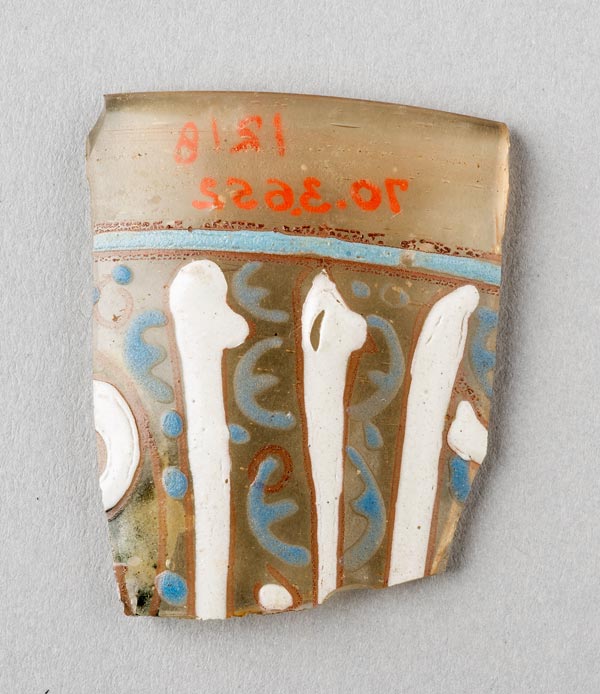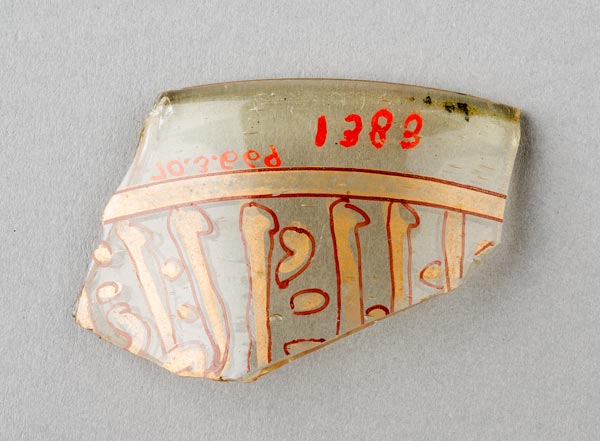Fragments from Different Vessels or Lamps
The Show

Fragments from different vessels or lamps 13th–15th centuries, Fustat (medieval Cairo), Egypt Enamel-painted and gilded glass Kelsey Museum of Archaeology, 1970.3.652, 1970.3.669, and 1970.3.738
These glass fragments from three different vessels bear Arabic inscriptions painted in enamel. Two include calligraphy painted in gold and outlined in red, and one displays letters in white surrounded by blue tendrils. At times, enameled glass vessels are so filled with decoration that their transparent glass body is almost entirely concealed. These fragments may have belonged to lamps or vessels. If on glass lamps, the inscriptions would have glowed from a lit wick placed within the object. Those with gilding would have sparkled even more. During the Mamluk period in particular, enamel-painted glass lamps illuminated the interior spaces of mosques and tombs in Egypt and the Levant. At times, such lamps include the "Light Verse" (ayat al-nur) from the Qur’an, which describes God as the "Light of the heavens and earth" and a glittering lamp.
Bibliography: Carboni 2001, 323–369, cat. nos. 92a–j, 93a–d, and 100a–c; Carboni and Whitehouse 2001, 199–273; Ward 1998; Wiet 1932; Rogers 2000; and Scanlon and Pinder-Wilson 2001, 114–119, pls. 46b–t.
Return to the Show


